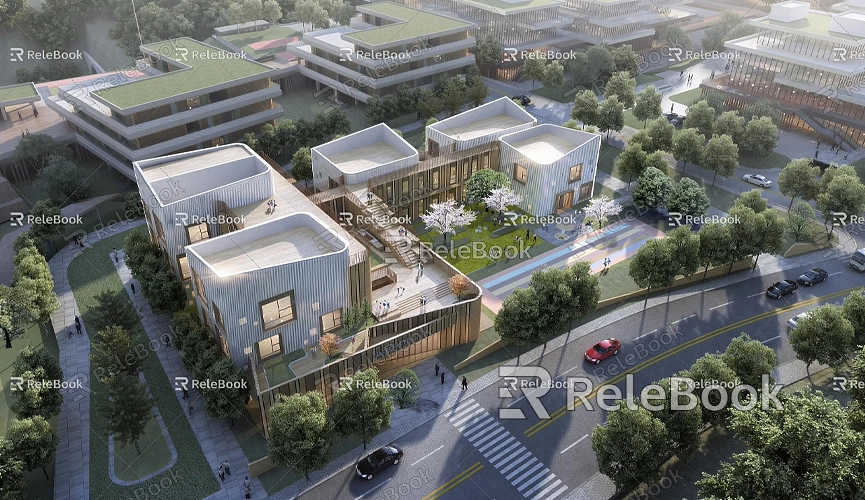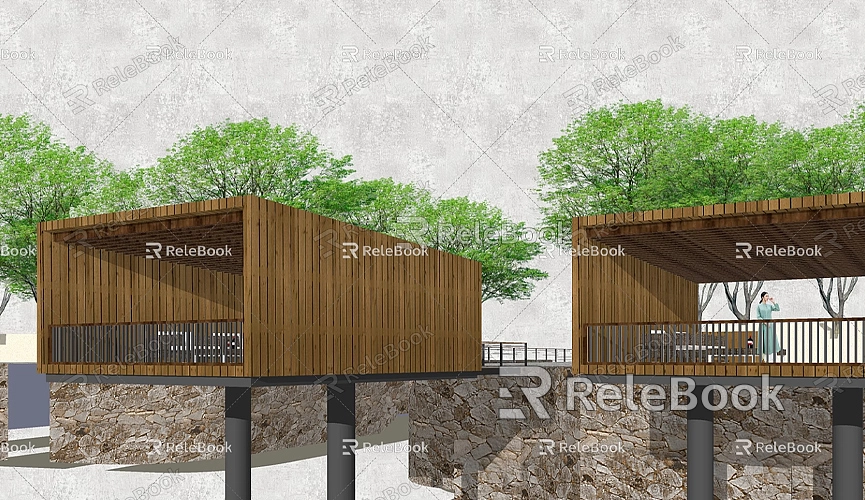How to Change the Default Background in SketchUp Models
In SketchUp, the background is not just about aesthetics; it can significantly influence the overall visual effect during design and presentation. The default background often consists of a blue sky and ground lines, but this may not be suitable for all projects. For instance, when working on interior design or product modeling, this background might seem out of place. Therefore, learning how to change the default background in SketchUp can make your models better align with project needs and leave a stronger impression on clients.
This article will provide a detailed guide on how to change the default background in SketchUp models, along with some common background adjustment techniques, including how to add custom images, adjust background colors, and modify other environmental settings. These techniques can help you create more professional-looking models in SketchUp.
Why Change the Background in SketchUp?
Changing the background plays an important role in the modeling process, as it can create a specific atmosphere for your design. For example, in architectural design, simulating a real sky and natural environment can better showcase the appearance of a building; in product design, a simple, solid-color background can highlight the product's details, keeping the viewer's focus on the model itself.

Choosing the right background can help you:
- Better present the theme and style of your design.
- Enhance the overall visual effect of the model.
- Make the model more suitable for different presentation environments.
Changing Background Color
The simplest way to change the background in SketchUp is to adjust the background color. By default, the background combines a blue sky with clouds and grass, but you can change it to a solid color to meet your needs.
Steps to Change Background Color:
1. Open SketchUp, click on the "Window" option in the top menu bar, and select "Styles."
2. In the Styles dialog, find the "Background Settings" option. Here, you can see the current background color settings.
3. Click on the color box next to "Background Color," which will open a color picker. You can choose a new color or manually enter a specific color value.
4. After confirming the color, close the dialog, and your background will instantly update to the new color.
This method allows you to quickly set the background to pure white, gray, or any other color, making it clearer and simpler for product rendering or printing images.
Adding Custom Background Images

If you want the background to be more than just a solid color, such as incorporating a sky, cityscape, or interior scene, you can set it up in SketchUp. This will make your model appear more realistic during rendering.
Steps to Add Custom Background Images:
1. Open SketchUp, go to the "Window" option, and then click on "Styles."
2. In the Styles dialog, select the "Watermark" option. Click the "Add Watermark" button to import your prepared background image.
3. Once the image is selected, you can adjust its position, size, and opacity.
4. After finishing the settings, click "OK," and your custom background image will display behind the model.
This method is particularly useful for designs that need to showcase outdoor scenes or simulate specific background environments. For example, to display a building in an urban setting, you could use a city skyline as the background.
Adjusting Environmental Settings
In addition to colors and images, SketchUp allows users to customize more environmental settings, such as the color of the sky and ground, and fog effects. These options can help you simulate more realistic scene effects, especially during rendering for better results.
Adjusting Ambient Light:
1. Still in the Styles dialog, this time select "Environment" settings.
2. Here, you can modify the colors of the sky and ground to create different lighting effects. For example, adjusting to warm tones can simulate a sunset, while cool tones are more suitable for morning scenes.
3. You can also find the "Fog" option in the "View" menu. By adjusting the fog density and distance, you can simulate a blurry effect for distant objects.
These minor adjustments can greatly enrich your model presentation, especially when providing clients with realistic environmental effects.
Using Plugins to Enhance Background Effects
While SketchUp's default tools offer many options, if you want more customization and control over the background, consider using third-party plugins. Plugins like V-Ray and Thea Render provide more background rendering options, including finer light and shadow effects, and panoramic backgrounds.
Using V-Ray for Background Settings:
1. After installing V-Ray, open SketchUp and go to V-Ray's "Asset Editor."
2. In the "Environment" option, you can add HDRI images for the background, resulting in more realistic lighting and sky effects.
3. You can also adjust parameters like background brightness and saturation to better fit the overall style of your model.
The advantage of V-Ray lies in its ability to handle more complex lighting and material reflections, resulting in a more realistic rendering. If you're creating models and virtual scenes that require high-quality 3D textures and HDRI, you can download them for free from [Relebook](https://textures.relebook.com/). For high-quality 3D models, check out [Relebook](https://3dmodels.relebook.com/), which offers a wealth of premium 3D resources.
Tips for Choosing the Right Background
When selecting an appropriate background, consider the following tips to enhance the impact of your model:
- Keep it Simple: For product displays or interior designs, overly complex backgrounds can distract viewers. Opt for a simple solid color background, like white or light gray, which won't clash with the model's details.
- Choose Appropriate Environmental Images: If using a custom background image, ensure it matches the scene's atmosphere. For example, when showcasing a coastal villa model, a clear blue sky and coastline make for a more natural integration of the model and environment.
- Adjust Based on Project Needs: Different projects may require different background needs. Product design, architectural rendering, and interior visualizations all have their own suitable background types. Therefore, before using a background, consider the project's characteristics to choose the most appropriate one.
Changing the default background in SketchUp is a practical technique that can help enhance the overall effect and visual impact of your models. Whether simply adjusting the background color or using custom images and rendering plugins, you can apply these techniques flexibly based on actual project needs. With appropriate background settings, you can better showcase your design results and create a unique visual atmosphere.
In the design process, selecting the right background, colors, and materials can significantly enhance the expressiveness of your models. The 3D textures and model resources provided by Relebook can inspire and support you in quickly creating high-quality work in SketchUp. I hope this article helps you master how to adjust backgrounds in SketchUp, making your designs more expressive and appealing.

